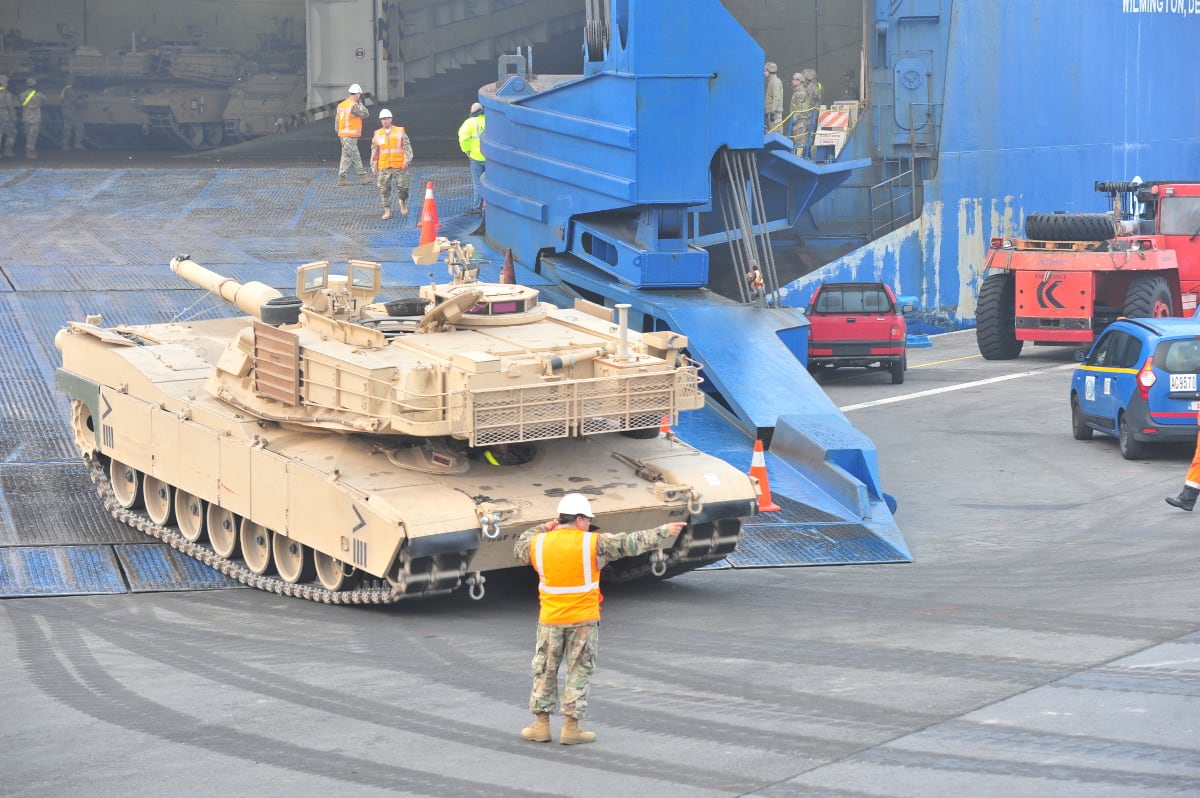To win a war, you need to be able to show up.
I don’t mean just being present. I’m talking about large-scale military deployments — the sort that would be necessary to respond to North Korean or Iranian aggression, or to fight alongside our NATO allies should one of them invoke Article 5. The threat of an overwhelming American force is the deterrent that keeps many of our foes from pushing the envelope as far as they’d like.
There’s only one problem — the U.S. armed forces cannot show up as required right now.
Our Merchant Marine fleet’s wartime role is to move weapons, ammunition, troops, equipment, fuel and supplies. Our current fleet — simply put — does not have the capacity to meet today’s requirements.
We don’t have enough ships, and even if we did we don’t currently have the crews to sail them. We’re short at least 1,800 merchant mariners. Consequently, our primary forces would be weeks late to any major conflict, and in today’s environment, speed is essential. Late arrival could have dire consequences.
Our enemies understand our deficiencies. They read American newspapers and congressional testimony in Pyongyang, Tehran, Moscow and other world capitals. And as anyone who has watched the news in the last few months can tell you, these potential adversaries are “testing” us daily.
The ability to rapidly deploy our forces suffers from two primary deficiencies. The first is a lack of Merchant Marine ships, and the second is a lack of qualified merchant mariners.
First, the ships. This is a matter of sheer numbers. In 1951, the U.S. Merchant Marine had 1,288 ships operating in international trade. Today, there are 81 ships. This means the U.S. Merchant Marine does not have the shipping capacity our country needs to deploy and supply the most capable military in the world.
RELATED

Military Sealift Command and the Maritime Administration’s sealift fleets are in even worse shape. Combined, they furnish 61 cargo ships. Yet, even that small number is misleadingly high. Twenty-six of those ships run on steam — to call them outdated would be a compliment. We’re also keeping that 61-ship number artificially high by allowing ships to operate for 50 and even 60 years, long past their life expectancy. These older ships require more maintenance and risk major breakdowns.
The human capital shortage may be worse than the shortage in ships. A report by the Maritime Administration to Congress highlighted the problem. The report “estimates that 11,768 qualified mariners ... are available to crew the Ready Reserve Force ... the estimated demand for mariners [in an emergency] is 13,607.” Given the shortage, those mariners who are available “may have to endure prolonged assignments or tours of duty until the emergency is over,” which will decrease effectiveness, increase errors and — of greatest concern — delay deploying the forces necessary to win a large-scale conflict.
Maritime Administration Administrator Adm. Mark Buzby, retired from the U.S. Navy, was blunter in his assessment: “We’ll run out of people,” he said, “before we run out of ships.”
Taken together, this shortage of ships and qualified mariners is “threaten[ing] our ability to meet national security requirements,” as the outgoing U.S. Transportation Command commander, Gen. Darren McDew, told the Senate Armed Services Committee. Our enemies know that, as capable as our military is, it is a paper tiger if it can’t get to the battlefield on time. The deterrent capability of our military is weakened by our inability to deploy combat-ready forces quickly.
There are solutions. In the short term, we can address the mariner shortage by expanding enrollment at the U.S. Merchant Marine Academy, where all graduates commit to eight years of service. USMMA graduates make up 80 percent of the strategic sealift officer force.
The academy, now celebrating its 75th year of service to the nation, reduced the entering-class size from 350 midshipmen per year to some 270 years ago. The infrastructure is there to support larger classes (but not the budget), making this revitalization of the student body an obvious first step. An increase in class size would assure the nation of additional committed Merchant Marine officers available to man any vessels that the U.S. might need to utilize in a national emergency. As investments in national security go, this one is inexpensive.
U.S. Merchant Marine ships are commercial cargo ships and require peacetime cargo to be viable, and therefore available to meet the wartime need. To that end, as Maritime Administrator Buzby has said: “Cargo is king.”
To ensure the peacetime utilization of these wartime assets, the U.S. government needs to ship 100 percent of its peacetime cargo on these ships. Commonly referred to as “cargo preference,” this is yet another easy way to implement a solution to a basic problem that is destabilizing our Merchant Marine force.
One-hundred percent U.S. government peacetime use of U.S. flag merchant ships would increase the number of U.S. flag vessels, which in turn increases the U.S. flag vessels available to support our armed forces' future defense needs.
Finally, there’s no getting around the need to modernize the Maritime Administration’s Ready Reserve Force and replace aging ships in the Military Sealift Command fleet. Increasing the number of vessels in the Maritime Security Program, especially oil tankers, is also vital to our defense readiness.
This issue will never grab headlines, at least not in peacetime. It is easy to overlook because — given the sheer strength of our military — our ability to show up should be a given.
It’s not. And our enemies know it. Unless we address the shortages, our military, for all its might, will be all bark and no bite.
Kenneth Wykle, a retired U.S. Army lieutenant general, was deputy commander in chief of U.S. Transportation Command, the unified command for the Army, Navy and Air Force, responsible for all defense transportation.







